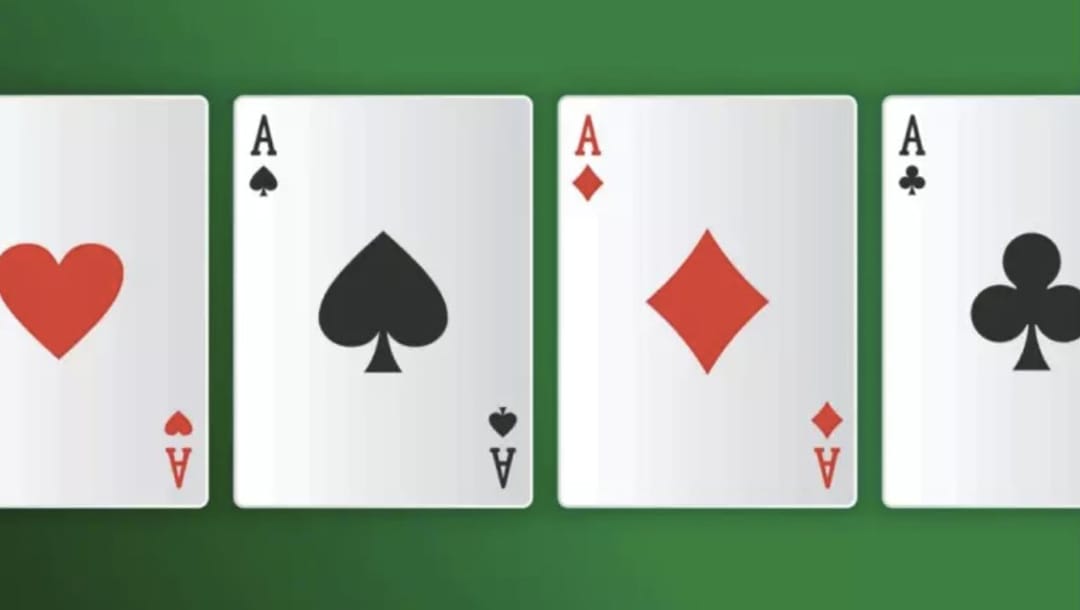What Is a Poker Tell?
A poker tell is a habit (or habits) that players may have. There are two main categories of poker tells. The first category comprises physical tells, which are very important in live poker games. The second is betting patterns, which apply to both online and offline games.
As a novice player, once you have the poker basics mastered, reading poker tells can help you take your game to the next level.
How To Spot Physical Poker Tells
Physical tells refer to the unconscious or involuntary things players do, which can give you insight into the strength of their hand or the type of player they are. Some of these actions are more obvious, while others are far more subtle.
Of course, it is also important to differentiate between a tell and a player’s deep understanding of the situation. A typical example would be in a 10-to-one situation where your opponent may look more confident on a weak hand simply because they have 10 times your stack and stand to lose much less than you if you call their all-in.
Hiding tells from their eyes is one of the reasons why some poker players wear sunglasses in live games. This prevents their opponents from seeing their eyes and judging their reactions to the cards they have. It also hides the fact that they may be analyzing their opponents.
Examples of Physical Poker Tells and How To Use Them to Your Advantage

How To Tell When a Player Likes Their Hand
- Strong, focused, unblinking gaze.
- Confident, relaxed speech, with a natural speaking pattern and a possible decrease in pitch.
- Relaxed, regular breathing.
- Hands trembling from excitement.
- Their hands move towards their chips or pick up their chips before it’s their turn to bet.
- A sudden shift towards positive body language, such as leaning forward in a chair or leaning back into a relaxed position.
- Faking insecurity, which is harder or easier to detect depending on the acting skills of the player.
How To Tell When a Player Does Not Have a Strong Hand
- Unable to hold eye contact, rapid blinking and eyes shifting from left to right as if looking for danger.
- Unconfident, nervous speech, demonstrated by an increased pitch and possible stutter.
- Breathing through the mouth or shallow rapid breaths.
- Tensing or biting of the lips.
- Covering their eyes or mouth.
- Hands trembling from fear.
- Biting of fingernails.
- Self-care gestures such as rubbing of arms or hands, as well as hugging themselves.
- Faking confidence, which is harder or easier to detect depending on the acting skills of the player.
Generally speaking, when assessing poker tells in body language, you want to look for clusters of actions. For example, a player who locks eyes with you and is breathing regularly but is leaning back in their chair, is more likely to have a strong hand than not. In contrast, a player who cannot maintain eye contact, has a voice that cracks when they speak, or starts to bite their nails is more likely to have a weak hand.
The first and most obvious way tells can give you an advantage is by being able to read behavior, which in turn allows you to make more calculated bets. However, there are two other strategies involving common poker tells that can help you “play your opponents.”
The first of these is using your knowledge to hide any tells that you may give off, denying your opponents any information they can use against you when betting. While tells can be subconscious, by paying attention to your behavior, you can start to alter these involuntary actions and avoid giving your opponents insights into the strength of your hand.
The second strategy you can use is to establish fake tells. Naturally, this requires a fair degree of confidence to pull off, so be careful how you use this, as your opponents may see through your act and call your bluff.
How To Read Opponents’ Poker Betting Patterns
Betting patterns is another tell that you can use to better understand how an opponent plays the game and is equally applicable to live and online poker games. However, before players dive into studying this aspect of poker, it’s important to realize that the knowledge around this type of tell is based heavily on experience. It’s highly unlikely that new players will be able to successfully spot a player pattern until they have played the game for some time.
If you are new to understanding betting patterns and are wondering where to start, poker pro, Mike Leah, offered this advice on the educational poker channel Ivey League:
- Remember to pay attention when you’re both in hand and not in hand, to pick up as much information as possible.
- This will help you identify the common mistakes people make when betting, such as betting too much on a draw, betting too little when they have a strong hand, and not betting high enough when making a blocking bet.
- Also, observe how a player bets from the start of the game, as it’s vital that you compare how they bet pre-flop and post-flop. This will help you assess the strength of their hand and get a better idea of what their range of cards might be.
Examples of Betting Patterns and How To Use Them to Your Advantage

Pokerology shares these eight common betting patterns in their piece “Reading Betting Patterns.”
1. Same Bet Size on the Turn As the Flop
A player with a weak hand is less likely to increase their bet size on the turn.
2. Check/Call, Small Bet on the Turn
Small bets on the turn after a check and a call, are usually blocking bets supported by weak hands. Force the opponent to pay if they want to stay in the game by increasing the bet.
3. Check/Call, Check Minimum Raise
A check, then call, followed by a check on a minimum raise might mean that your opponent has a set, especially on boards with a wide spread of cards.
4. Check/Insta-Call, Check/Insta-Call…Pause on River…Bet
Two checks followed by instant calls, with a pause on the river, followed by a bet, is very likely to mean the player knows exactly what they are looking for; and what they are looking for is a flush. Players will often continue with a bluff, even if the card they need for a flush isn’t revealed.
5. Min Bet, Min Bet, Big River Bet
This is often a bluff play, off a weak board, to try to force players to fold.
6. Pre-flop Raise of 4x+ From Someone Who Usually Limps or Raises 3x
If someone usually makes a minimum bet to stay in or “goes large” with a 3x bet, it usually means they have a strong pre-flop hand that might be beaten if more cards are revealed.
7. Pre-flop Open Limp From an Aggressive Player Who Always Raises
Any aggressive player who doesn’t raise is probably trying to trap people into placing bets. If this happens, they are likely to have a strong hand.
8. A Player Who Always Continuation Bets the Flop and Now Checks
This pattern follows a similar idea as betting pattern number seven. If a player usually raises pre-flop, continues the bet and then checks, they are probably trying to lull other players into a false sense of security.
Poker Tells in Online Poker
While physical tells may not be present in online poker, here are five common online poker tells to watch for.
1. Instant Calls
Opponents who quickly call bets often indicate a strong hand, as they want to appear confident and uninterested in considering other options.
2. Delayed Bets
A significant pause before placing a bet can imply weakness or indecision. It might indicate a player is unsure about their hand’s strength.
3. Timing Tells
Consistent patterns in the time taken to act can reveal a player’s decision-making process. Deviations from their usual timing might signal a stronger or weaker hand.
4. Chatbox Activity
Pay attention to players who suddenly become more talkative or silent. Excessive chatter can indicate bluffing, while sudden silence might suggest concentration on a strong hand.
5. Bet Sizing
Unusually large bets, especially after a long period of small bets, often signify a powerful hand. Conversely, min-bets or small raises can indicate weakness or an attempt to induce a call.
Remember, these tells are not foolproof. It’s crucial to consider other factors, like betting patterns (as mentioned earlier,) player tendencies, hand history and even requests to “run it twice” for a more accurate assessment.
Put Theory Into Practice With BetMGM
While physical tells may not apply to online poker, gaining the experience to understand betting patterns and other subtle indicators can help you increase your wins when you are playing online poker games for money. But where should you start if you’re new and want to play online?
Register with BetMGM, an established and trusted casino and poker brand that offers online poker services in the NJ region. BetMGM provides a variety of poker games for players, including free play Wi-Fi Wednesdays for more casual players. There are also online poker tournaments for more competitive participants.
To find out more about how you can join in on the online excitement, visit BetMGM’s online poker website today.










